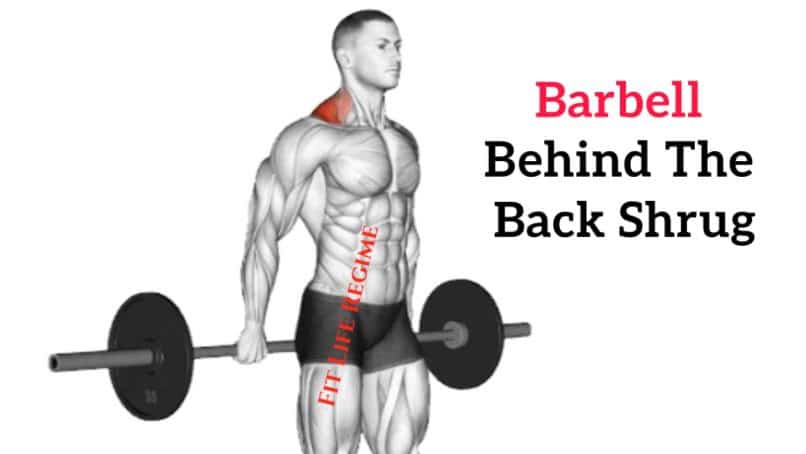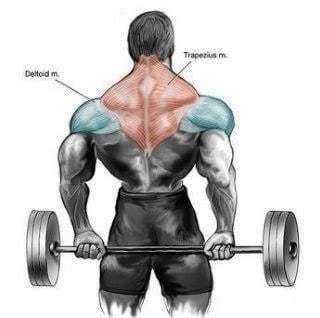Are you interested in taking your trap workout to the next level? The behind-the-back barbell shrugs might be the exercise you’ve been missing.
Shrugs, also known as shoulder shrugs, are isolation exercises that target your trapezius muscles, specifically the upper trap.
While traditional barbell shrugs are great for targeting the trapezius muscles, but behind-the-back barbell shrugs offer a fresh twist and activate all major upper back areas. Having the bar behind you helps keep your shoulders pulled down and back rather than rounded forward.
The study found that strength training, such as shrugging, significantly reduced the overall level of neck pain.
Know More: Best Upper Trap Exercises For Muscle Mass and Strength

Barbell Behind the Back Shrug Muscles Worked
Behind-the-back barbell shoulder shrugs are a popular exercise for strengthening your upper back, shoulder muscles, neck, and upper arms too.
- The main muscles that barbell shrugs target are the upper traps,
- Other muscles worked are several other upper back muscles, including the middle traps, lower traps, and rhomboids.

How To Do Behind the Back Shrug
- Stand with your feet shoulder-width apart.
- Grasp a barbell with an overhand grip, palms are facing away from you, and your hands are shoulder-width apart.
- Let the barbell hang at arm’s length at your buttocks.
- Keep your back straight and your chest up, and take a deep breath.
- Then shrug your shoulders toward your ears as much as you can.
- Hold the contraction for a moment before lowering the bar back to where it started.
- Do 8–10 reps and 3–4 sets for hypertrophy.
Tips and Forms
- Do not roll your shoulders, which can lead to a shoulder injury.
- To avoid putting unnecessary stress on your lower back, please keep your back straight throughout the exercise.
- Don’t hunch Your Shoulders Forward. Focus on keeping your shoulders back and down.
- It’s important to start with a lighter weight and focus on proper form before increasing it. The use of too much weight can result in injury or limit your range of motion.
- Focus on lifting the weight with your traps and not with your biceps.
- Pausing at the top of the barbell shrug makes the exercise more challenging, and you’ll get more out of it.
- Back shrugs are not necessarily bad, but they can be potentially harmful if performed with improper form or excessive weight. It is important to use the correct technique, starting with lighter weights.


Manish is a NASM-certified fitness and nutrition coach with over 10 years of experience in weight lifting and fat loss fitness coaching. He specializes in gym-based training and has a lot of knowledge about exercise, lifting technique, biomechanics, and more.
Through “Fit Life Regime,” he generously shares the insights he’s gained over a decade in the field. His goal is to equip others with the knowledge to start their own fitness journey.
